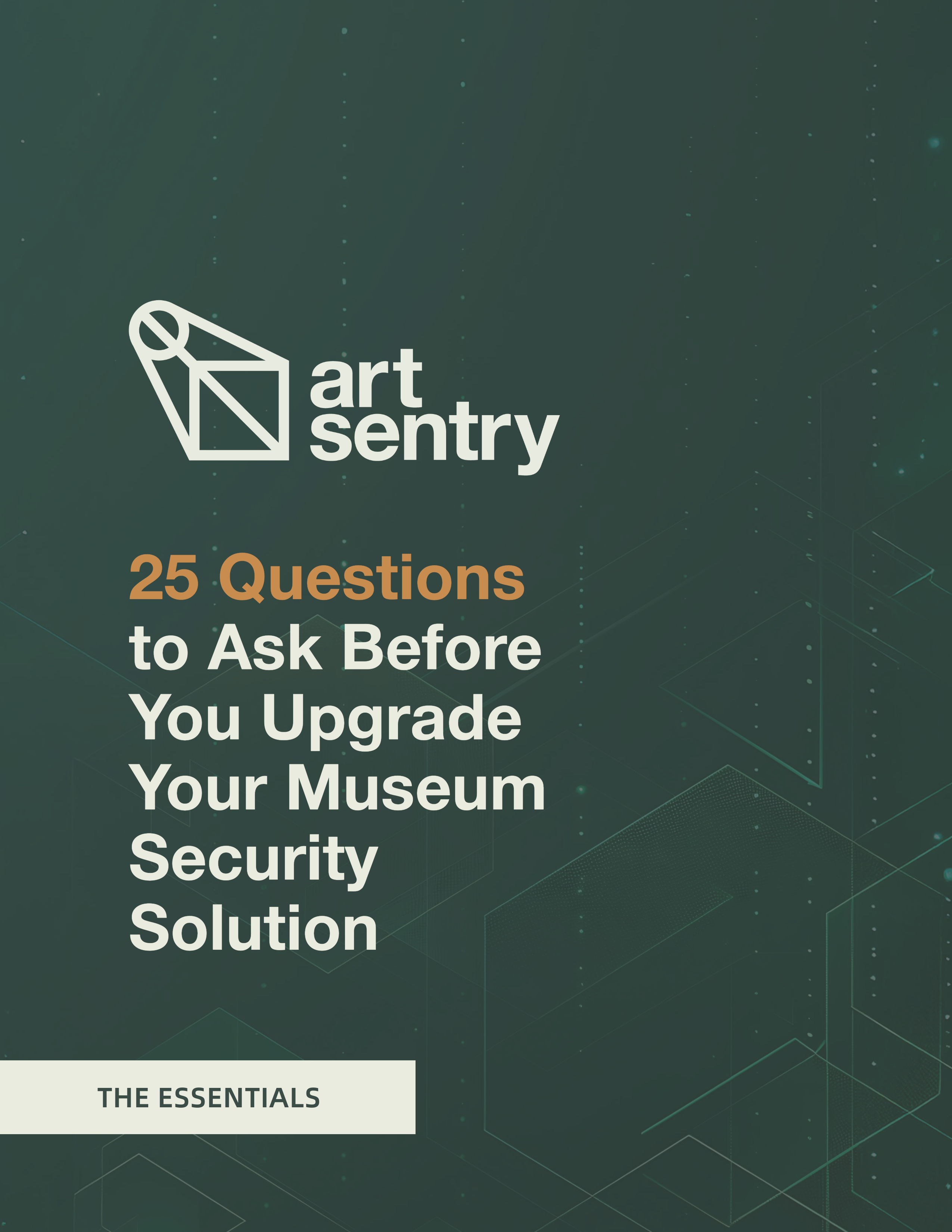As a museum leader, you balance preservation, public engagement, and budget realities. Security often feels like a necessary expense that’s purely defensive. Many assume the biggest risks involve high-profile theft. But industry data reveals a quieter, persistent threat: accidental damage and transportation incidents. These seemingly mundane events regularly trigger claims, complicating operations and inflating costs. AXA XL, a leading fine art insurer, emphasizes that museums investing proactively in advanced security solutions reduce losses and transform their risk profiles significantly.
By integrating proactive and well-planned security measures—like continuous monitoring technology—you strengthen your institution’s financial position, streamline insurance claims, and convert extra security measures from a burdensome expense into a strategic asset. Here’s why leading museums increasingly view proactive security as foundational to long-term operational success.
The Real Museum Risk: It’s Rarely About Theft
Movies and headlines shape perceptions about museum risk. High-profile art heists and daring thefts dominate the public imagination, but the reality is different. Theft is relatively uncommon. Instead, most museum insurance claims stem from accidental damage and transportation mishaps—incidents that are less sensational yet equally disruptive to museum operations.
Accidental damage typically involves visitors brushing against artworks or contracted staff inadvertently mishandling delicate objects. While these scenarios lack the drama of theft, their financial impact can be substantial. Even momentary lapses in careful handling can trigger significant claims, underscoring the need for proactive security measures.
Transportation incidents pose another ongoing challenge. Every time museums move art between exhibitions, inherent vulnerabilities arise. Even minor packing errors or mishandled crates can cause costly damage. AXA XL underwriters highlight that although transportation claims rarely make headlines, they consistently pose serious operational challenges.
By realistically understanding museum risk, leaders can recognize proactive security as a critical strategy for operational success rather than viewing it simply as protection against theft.
AXA XL’s GRASP Program: Clearer Insight, Stronger Security
Museum leaders know that understanding their institution’s vulnerabilities is critical. Yet, objectively identifying those gaps can be challenging without specialized tools. That’s where AXA XL’s GRASP program comes in.
GRASP—the Global Risk Assessment Platform—is a proprietary system developed by AXA XL specifically for museums and fine art facilities. It uses a standardized yes-or-no methodology across more than 1,200 security criteria to deliver unbiased assessments. Areas evaluated include fire protection, environmental monitoring, art handling, access controls, and more.
Unlike subjective security evaluations, GRASP uses a standardized yes-or-no methodology. Trained security experts visit and assess facilities across 1,200 specific security criteria. These criteria include building design, fire detection and suppression, electronic security, environmental monitoring, access control, staff training, and transportation and storage protocols.
The binary assessment approach removes guesswork, generating an unbiased security profile for each museum. After completing the assessment, GRASP delivers a detailed report pinpointing vulnerabilities and highlighting strengths. Museum executives immediately see what requires attention.
GRASP doesn’t just identify issues; it provides actionable recommendations. Museums receive a detailed checklist of prioritized improvements, allowing leadership to address critical vulnerabilities efficiently and strategically. Instead of generalized advice, GRASP’s reports offer concrete steps that immediately improve the museum’s risk profile.
By leveraging GRASP’s insights, museums improve their security and position themselves favorably with insurers. AXA XL underwriters confirm that institutions using GRASP assessments benefit from enhanced risk profiles, translating into better operational predictability and improved insurance outcomes.
GRASP Security Assessment at a Glance
Facility & Operations | Security & Monitoring | Art Handling & Transport |
Building Layout & Design Facility Administration Human Resources & Training Access Controls | Electronic Security Fire Detection & Suppression Environmental Alarm Systems Natural & Allied Perils, Contingency Planning | Transport Operations & Packing Inventory & Storage Handling Museum-Specific Security Topics |
Security Solutions as Strategic Investments
Museum executives often see security primarily as an operational expense. Budgets are tight, requiring careful justification of every investment. Yet advanced solutions—such as real-time alerting, zone monitoring, and incident tracking—deliver more than basic protection; they’re strategic tools directly tied to financial health and operational continuity.
Art Sentry’s technology provides precise, continuous monitoring of your exhibits and collections, quickly alerting your staff to potential incidents before they escalate. Early detection reduces costly damage from common issues like accidental impacts or mishandling. Additionally, Art Sentry captures detailed activity logs, streamlining the insurance claims process by clearly documenting incidents and simplifying insurer investigations.
AXA XL and other leading insurers recognize and reward proactive risk management. When evaluating a museum’s insurance profile, underwriters closely consider the quality and effectiveness of the security measures in place. Investing in advanced systems like Art Sentry can position your museum more favorably, potentially resulting in better insurance terms, lower overall costs, and smoother claims management.
A New Perspective: Museum Security as Strategic Advantage
It’s time to rethink museum security. Rather than viewing it solely as a reactive necessity, consider it a strategic investment that protects your collections, strengthens financial stability, simplifies insurance claims, and improves institutional resilience.
Whether you’re assessing new systems or re-evaluating current protocols, focusing on proactive, smart, and data-driven security approaches helps your museum operate with confidence. Aligning your risk strategies with best practices shared by industry experts like AXA XL—and supported by technologies like Art Sentry—positions your institution for long-term success.
Want to learn how Art Sentry can support your museum’s security strategy?
Explore our solutions today.
ABOUT AXA XL
AXA XL provides insurance and risk management products and services for mid-sized companies through to large multinationals, and reinsurance solutions to insurance companies globally. We partner with those who move the world forward. To learn more, visit www.axaxl.com
ABOUT AXA XL INSURANCE
AXA XL Insurance offers property, casualty, professional, financial lines and specialty insurance solutions to mid-sized companies through to large multinationals globally. We partner with those who move the world forward. To learn more, visit www.axaxl.com


